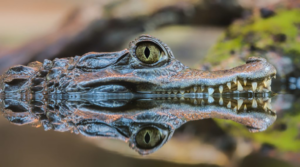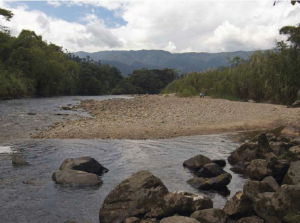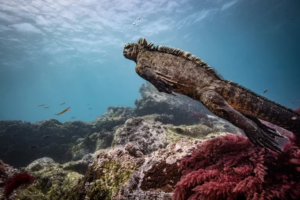The worldview has to do with the reciprocity that we have regarding everything that surrounds us, not only the material but also the spiritual, which leads us to live in fullness and complete harmony with our surroundings.
There is a diversity of worldviews, as many as there are cultures, but two antagonistic worldviews have been differentiated: the ancestral, indigenous worldview, in which the other diversities are grouped, and the modern western worldview. This means that if, for example, a culture has, as part of its worldview, to respect the mountains, its practices against those mountains will not be harmful; but if a certain culture believes that, for example, water is an inanimate entity, surely its practices against water will be extremely violent, leading to the scarcity or disappearance of that element.
Worldviews mark the differences between cultures, and these differences enrich diversity.
Our connection with nature allows us to understand that we must live together in harmony and reciprocity, taking only what we need. The indigenous worldview is a way of interpreting life in fullness as a harmonious realization between man and nature. In Ecuador, the cultural heritage of the native peoples is maintained in the concept of Sumak or Alli whose meaning is life in plenitude or Good Living.
Due to the diversity of elements to which human actions are conditioned that propitiate the “Sumak or Allí Kawsay”, such as knowledge, ethical and spiritual codes of conduct in the relationship with the environment, human values, vision of the future, among others, the concept of Sumak or Allí Kawsay constitutes a central category of the philosophy of life of indigenous societies.
Sumak or Allí Kawsay is an indigenous concept of sustainability and an alternative paradigm to development, based on Sumak kawsay, that is, on the ancestral knowledge of indigenous peoples and nationalities that is transmitted through generations, and the equity of its community members. In addition, values such as solidarity and reciprocity are promoted.
The term cosmovision should be conceived as the way of understanding the world in a concrete way. The universe is interpreted by the indigenous community as: pachakuna (worlds), kay pacha, uku pacha and hanan pacha, that is, it expresses philosophical and particular ideologies of the pacha (world).
Harmony constitutes one of the important aspects in the cosmovision of indigenous peoples and nationalities; it derives from the particular conception of the relationship between man, nature and the universe, since the man-cosmos component is configured and weaves the collective personality of the Andean, in a kind of empathy, unity and concordance in energy and spiritual state between people, things and the cosmos. Within this vision, for example, in the indigenous nationalities of the Amazon, the jungle and the earth are strata that unite the physical spaces with the intangible, the material with the spiritual, whose mediator is the wise person (yachak in the Kichwa language). The social practice of this vision of life and the cosmos is fundamental in the dynamics of the construction of Sumak or Allí Kawsay.
The Andean cosmovision is interrelated with the sumak kawsay, since this is the basis for guiding the reconstruction of a new profile of civic coexistence in Ecuador or the world, in variety and friendship with nature, with humans.
The members of the ethnic groups share, to a great extent, a conception of life in which are inscribed notions about the surroundings, more precisely about the environment they inhabit, and the way in which human beings relate to each other and with the other components, the parts of the whole being inscribed in a structured conception of life.
The origin and evolution of the universe is formed with shared beliefs about the origin of the cosmos, of nature and of life in its different forms: plants, animals, human beings, and the other elements present in the universe, from the stars to the rivers and mountains.
In short, with all the elements of vital energy that can be perceived, sensorially and extrasensorially, in the different states of consciousness induced by the effects provoked with the help of sacred plants. Cosmogony is closely related to the myths of origin.
From this normative structure derives the ethics, which is composed of individual behaviors, as a result of the reflection of each person. The shaman, taita or healer, acts as a mediator accepted in the collective to select the ingredients, prepare and guide the ingestion of psychoactive substances consumed, in a selective or collective manner, in that society.
In this framework, the cosmovision of the indigenous peoples transmits the unity and balance among all and it is necessary to practice certain principles, such as reciprocity, solidarity, duality, rites and ceremonies of gratitude and payment. A reciprocity not only between human beings but a reciprocity of man with the Pachamama and the divinities, is the wisdom of our elders who together live in harmony with the sun, the moon and the Pachamama for thousands of years.
In itself, plurinationality and interculturality is not simply admiring the music or clothing of indigenous peoples and nationalities and then being indifferent to their worldview; On the contrary, it is to recognize, respect and share not only their values, but also to be part of a system of government and a different model of political, economic, productive, social, environmental and cultural organization, and then to have the will to find mechanisms to unite this diversity and to advance in a joint work between the State and the collectivities to strengthen each community, people or nationality and to vindicate in the facts the crossing of knowledge and knowledge between cultures as the basis of intraculturality and interculturality and the construction of a plurinational State.




